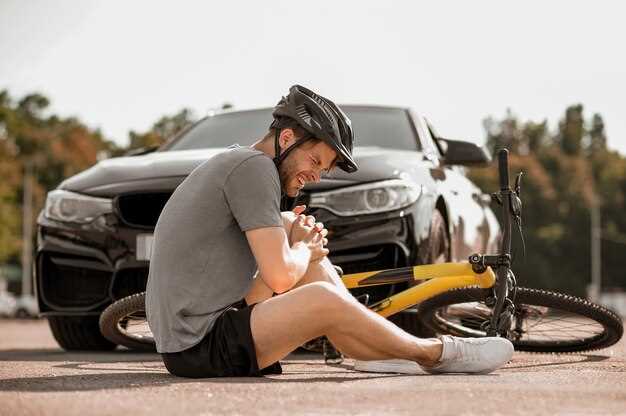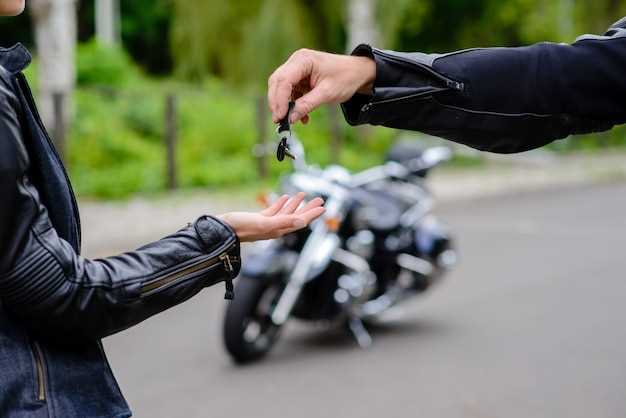
Motorcycling offers a unique sense of freedom and excitement, yet it also comes with its share of risks. The thrill of riding can be overshadowed by the unfortunate reality of motorcycle accidents, which often result in severe injuries or fatalities. To truly embrace the joy of riding, it is essential to prioritize accident prevention. This article delves into effective tips and strategies to help riders minimize the chances of encountering dangerous situations on the road.
Understanding the common causes of motorcycle accidents is the first step toward achieving a safer riding experience. Many incidents occur due to a lack of visibility, inattention from other drivers, or poor weather conditions. Riders must be proactive in developing their skills and awareness, as these factors play a crucial role in overall safety. By implementing preventive measures and adopting safe riding practices, motorcyclists can significantly reduce the likelihood of accidents.
In the following sections, we will explore various strategies for accident prevention, including tips on defensive driving, proper gear selection, and maintaining situational awareness. Each rider’s commitment to safety is vital, not only for their well-being but also for fostering a culture of respect and caution on the roads. Let us take a closer look at how to build safer riding habits and ensure a more enjoyable journey.
Avoiding Common Motorcycle Accidents: Tips and Strategies
Motorcycle accidents can often be avoided through careful planning and awareness. Understanding common accident causes is essential for effective prevention. One of the primary strategies is to always wear appropriate safety gear, including helmets, gloves, and protective clothing, which can significantly reduce injury severity in the event of an accident.
Staying visible on the road is crucial. Motorcycles can easily be overlooked by other drivers, especially in low-light conditions. Using reflective gear and ensuring that your lights are on can enhance visibility. Additionally, be aware of your surroundings; scanning the road and checking mirrors frequently can help anticipate potential hazards.
Defensive riding is another key strategy for accident prevention. Always maintain a safe following distance from vehicles ahead, allowing ample time to react to sudden stops or changes in traffic patterns. Be particularly vigilant at intersections where many accidents occur. Make eye contact with other drivers whenever possible to ensure they see you.
Regular maintenance of your motorcycle is critical for ensuring safe operation. Check tire pressure, brakes, and fluid levels routinely. A well-maintained bike has a lower risk of mechanical failure, which can lead to accidents. In addition, consider taking advanced riding courses to enhance your skills and learn new strategies for accident avoidance.
Weather conditions also play a significant role in motorcycle safety. Understand how rain, wind, and varying temperatures affect your ride, and adjust your speed accordingly. When road conditions are poor, it is advisable to stay off the motorcycle until it is safe to ride.
Lastly, avoid distractions while riding. This includes refraining from using mobile devices or engaging in unnecessary conversations. Focus solely on the road to improve your reaction time and decision-making abilities. Implementing these tips can significantly reduce the likelihood of accidents and promote safer riding experiences.
Understanding Blind Spots and How to Navigate Them
Blind spots are areas around a motorcycle that are not visible to the rider, posing a significant risk when navigating traffic. Understanding these blind spots is crucial for prevention of accidents and enhancing overall safety. Here are key points to consider:
- Definition of Blind Spots: Blind spots are gaps in visibility that a rider cannot see through their mirrors or by turning their head. They are typically located to the sides and rear of the motorcycle.
- Common Blind Spot Areas:
- Directly behind the motorcycle
- To the left and right sides of the bike
- In the vicinity of larger vehicles, such as trucks or SUVs
To effectively navigate blind spots, consider the following strategies:
- Adjust Mirrors Properly: Ensure mirrors are positioned to provide the maximum field of vision. This can help reduce blind spots.
- Use Head Checks: Always turn your head to check blind spots before changing lanes or merging. Visual confirmation is key.
- Increase Following Distance: Maintain a safe distance behind vehicles to enhance visibility and reaction time.
- Avoid Riding in Another Vehicle’s Blind Spot: If you find yourself alongside a larger vehicle, adjust your speed to move ahead or fall behind, minimizing potential hazards.
- Be Aware of Surroundings: Constantly scan the road for potential obstacles and the positions of other vehicles, especially in heavy traffic.
By understanding and addressing blind spots, riders can significantly reduce the risk of accidents. Incorporate these practices into your riding routine for safer outcomes on the road.
Choosing the Right Gear for Maximum Protection

When it comes to motorcycle riding, the right gear is crucial for prevention against injuries. Investing in quality protective equipment significantly reduces the risks associated with common motorcycle accidents. The following items are essential for ensuring maximum protection on the road.
1. Helmet: A high-quality, DOT-approved helmet is non-negotiable. Look for models that fit snugly and offer full-face coverage. Helmets drastically reduce the risk of head injuries during an accident, making them your first line of defense.
2. Jacket: Choose a motorcycle jacket made from durable materials like leather or high-quality textile. Look for features such as abrasion resistance, armor pockets for added protection, and ventilation to keep you comfortable while riding. A well-fitted jacket can protect your upper body during a fall.
3. Pants: Just like jackets, motorcycle pants should be constructed from tough materials. Consider options with built-in armor at the knees and hips. Some models even come with weatherproof features, enhancing both safety and comfort regardless of conditions.
4. Gloves: Invest in gloves that provide both grip and protection. Full-fingered gloves made from leather or specialized textile can safeguard your hands and improve handling. Look for reinforced knuckles and palms to increase impact resistance.
5. Boots: Sturdy, high-top boots offer support and protection for your feet and ankles. Features such as reinforced toe boxes, waterproof materials, and slip-resistant soles are important considerations. Avoid regular shoes, as they do not offer adequate protection in the event of a crash.
6. Eye Protection: Whether you choose a full-face helmet or sunglasses, protecting your eyes is vital. Wind, debris, and insects can impair vision and distract you while riding. Select goggles or visors that resist shattering and provide UV protection.
In summary, selecting the right gear is integral to motorcycle safety and accident prevention. Prioritize quality and fit when choosing protective equipment to ensure that you are well-equipped for any situation on the road.
Mastering Defensive Riding Techniques on Busy Roads

Defensive riding is crucial for preventing accidents on busy roads where the likelihood of collisions increases significantly. By adopting proactive strategies, motorcyclists can enhance their safety and minimize risks. One of the key principles is maintaining a safe following distance, allowing ample time to react to sudden stops or unpredictable movements from other vehicles.
Moreover, being aware of your surroundings is essential. This includes scanning the road ahead for potential hazards, such as debris, potholes, or other vehicles that might change lanes unexpectedly. Always utilize your mirrors to keep track of what’s happening behind you, ensuring you can make informed decisions quickly.
Utilize body positioning to enhance visibility and control. When approaching intersections, remain in the correct lane position to maximize your line of sight. This not only helps in spotting potential dangers but also makes you more visible to other drivers. Signal your intentions clearly and early, allowing surrounding vehicles to understand your movements.
Consider the use of protective gear, which can significantly contribute to accident prevention. Wearing appropriate clothing, helmets, and other safety equipment increases your chances of avoiding severe injuries in the event of an accident. Choose gear that improves your visibility to other drivers, such as bright colors or reflective materials.
In addition, continuously practicing braking and maneuvering techniques can prepare you for unexpected encounters. Mastering emergency stops and avoiding obstacles will equip you to handle sudden situations more effectively. Regularly reviewing your riding skills and understanding the traffic patterns on busy roads are also important for enhancing your defensive riding abilities.
Lastly, be mindful of weather conditions, as they greatly influence road safety. Adjust your riding behavior in rain or fog, as these factors can reduce visibility and traction. Always be prepared to slow down or change your riding strategy to adapt to changing conditions.




